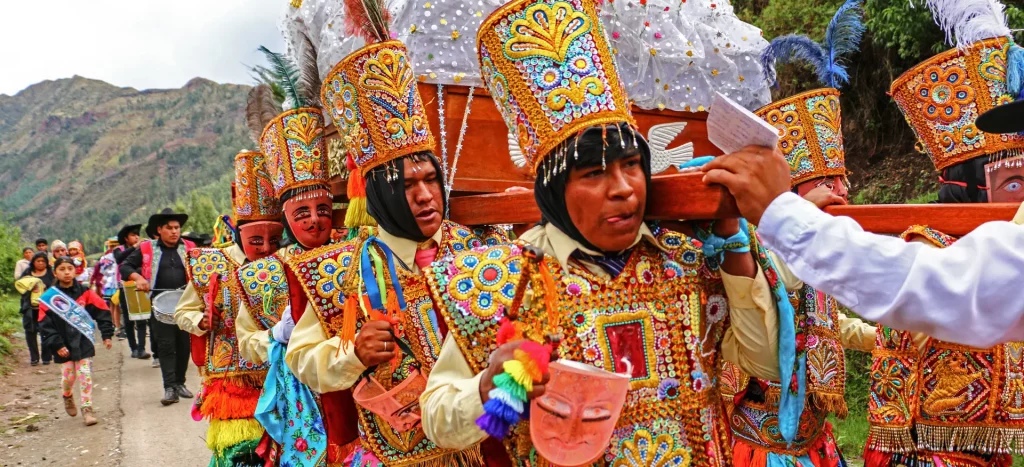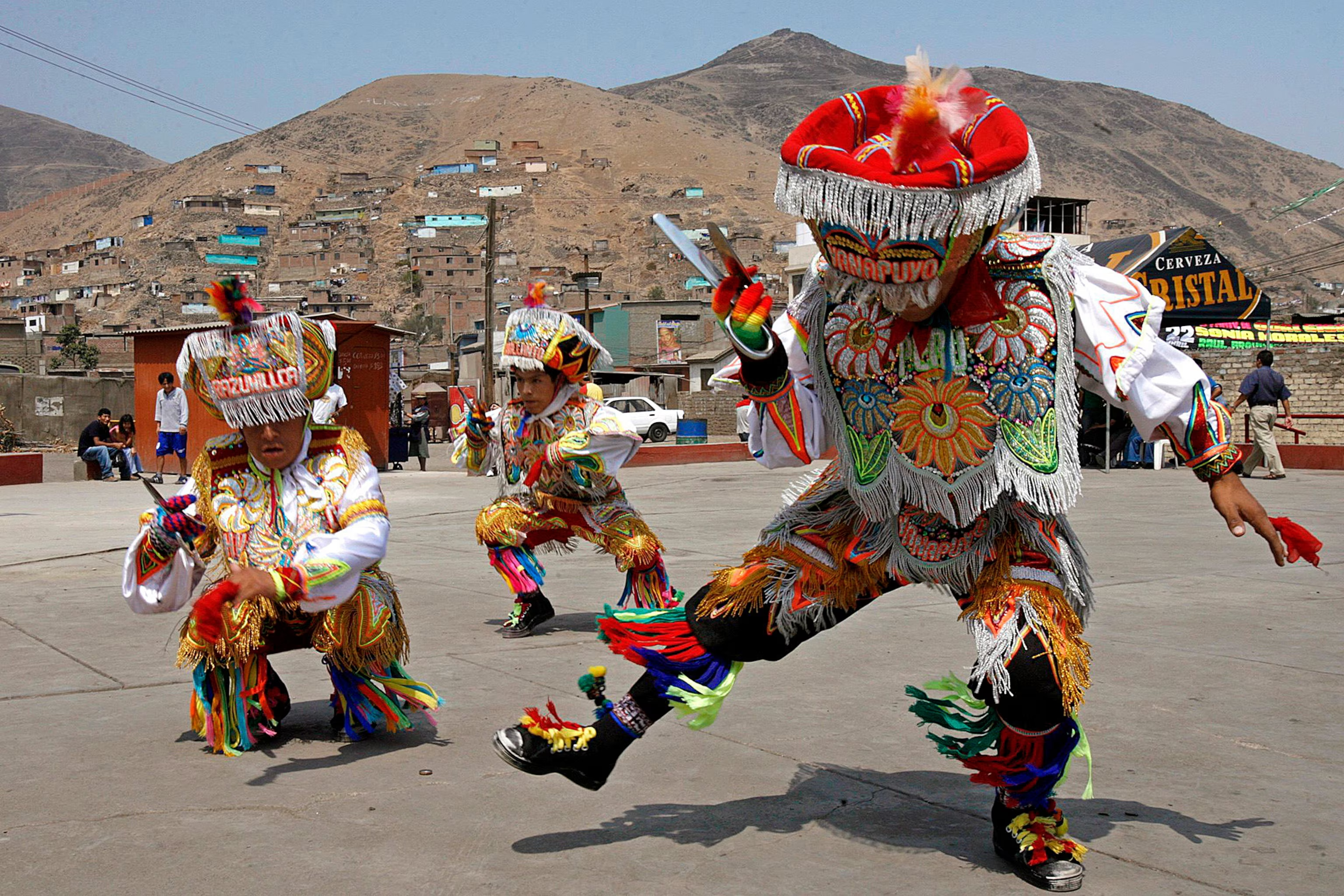A Cultural Welcome at the Airport
Upon my arrival at Jorge Chávez International Airport in Lima, Peru, I was greeted by a vibrant spectacle. Two young dancers, adorned in the rich tapestry of Peruvian folk costume, welcomed international guests with their enchanting performance of the renowned “Dance of Scissors.” In one hand, they held the emblem of APEC, and in the other, the strikingly crafted scissors, eliciting awe and joy from onlookers. As we witnessed the dance, many travelers, myself included, were compelled to join in the celebration, capturing the moment with photographs. The Dance of Scissors, a traditional Peruvian folk dance originated in the Andes, boasts a history spanning centuries. In 2010, it was inscribed in UNESCO’s Representative List of the Intangible Cultural Heritage of Humanity. This dance, having evolved through colonial times, now stands as a robust symbol of Andean culture in the modern world.
A Unique Instrumental Dance
The Dance of Scissors is one of the few traditional dances that incorporates scissors as a musical instrument. The centerpiece of this vibrant performance is a pair of meticulously crafted scissors, which measure approximately 25 centimeters. As the dancers twirl and leap to the rhythmic music, they skillfully clash the blades of the scissors together, creating a unique and percussive sound that resonates with the audience. Originating from the southern regions of the Peruvian Andes, this dance has made its way into urban communities, where it continues to thrive. With a distinct competitive edge, the dance is often performed during the dry season, aligned with the primary agricultural calendar. The intricate steps and techniques of the dance are passed down through generations, cultivating pride among dancers and musicians alike for their cultural heritage.
Cultural Significance and Recognition
In the 20th century, the Peruvian government began to actively promote its diverse cultural heritage, with the Dance of Scissors taking a prime position. Frequently showcased at significant domestic and international events, this dance has garnered acclaim as a hallmark of Peruvian tradition. During the recent APEC conference, it was chosen as a welcoming performance, symbolizing Peru’s open and inclusive spirit, as well as its deep-rooted cultural legacy.
A Historical Echo of Resistance
The origins of the Dance of Scissors trace back to the ceremonial dances of the Inca civilization, with a rich history of over 500 years. Initially, only priests were permitted to perform this dance, using scissors crafted from gold to communicate with the deities. According to the beliefs of the Incas, the sound of the clashing scissors signified divine power entering the dancer’s body. The choreography mimicked the movements of various animals like eagles, jaguars, monkeys, and frogs.
However, following the arrival of Spanish colonizers at the end of the 15th century, the dance transformed from a spiritual expression into a form of resistance. As Spanish forces imposed Catholicism on the indigenous populace, the Incas retaliated, wielding their sheep-shearing scissors as weapons. This adaptation led to the development of a combat dance, performed rhythmically to the accompaniment of music. Despite the eventual downfall of the Inca Empire, the Dance of Scissors endured, integrating new musical elements brought by the colonizers, such as the violin and harp.
From Ritual to Celebration
Over the years, the Dance of Scissors has evolved from an ancient ritual of communicating with the gods into a festive celebration. Aside from performances during holidays, the dance plays a vital role in traditional Andean agricultural practices, being showcased during essential activities such as watering, planting, harvesting, and shearing llamas.

The Duel of Dances: A Testament to Skill and Endurance
As the dry season approaches, numerous villages and towns in the Peruvian Andes prepare for a symbolic “duel” among dance troupes, with contests lasting up to ten hours. Each performance narrates stories of survival, death, and rebirth related to the mountain deity Wamaní, as well as the struggle against foreign oppressors. The scissors used in these duels are not ordinary kitchen tools; they are custom-made metal implements crafted specifically for this art form. The larger pair is referred to as the “female” blade, while the smaller one is the “male.” The distinct sounds produced by each blade during their clash add a rich auditory dimension to the performance.
In competition, dance troupes typically consist of at least four members: two dancers, one harpist, and one violinist. The performances can feature more dancers, but they must always be in pairs. Dancers don loose-fitting trousers and jackets adorned with intricate metallic embroidery and golden or silver fringes. Their hats are embellished with tassels and feathers, enhancing their flamboyant appearance. Each dancer possesses an artistic name, beautifully embroidered onto their costumes.
When the competition commences, the dancers synchronize their intricate movements with the rhythmic accompaniment, escalating in complexity as the event unfolds. Their actions range from soaring leaps to acrobatic spins, all while maintaining a constant clang of the scissors. The dance also incorporates elements of extreme endurance and skill, such as fire walking or body piercing. Judges assess the competitors based on technique, physical stamina, and aesthetic appeal to determine the victors. In many instances, the dancer who endures the longest in their performance is crowned the champion. I’ve witnessed a dancer maintain a single routine for two to three hours—a remarkable testament to their dedication and artistry.





















